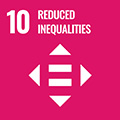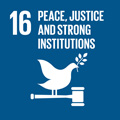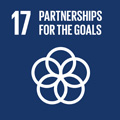- Docente: Donata Luiselli
- Credits: 6
- SSD: BIO/08
- Language: Italian
- Moduli: Stefania Sarno (Modulo 1) Donata Luiselli (Modulo 2)
- Teaching Mode: Traditional lectures (Modulo 1) Traditional lectures (Modulo 2)
- Campus: Bologna
- Corso: Second cycle degree programme (LM) in Biodiversity and Evolution (cod. 9075)
Learning outcomes
At the end of the course, the student will acquire skills regarding the most advanced technologies in the field of molecular biology applied to the forensic field. In particular, he will be able to perform species testing, DNA / RNA analysis from different kind of biological trace (e.g. small bloodstains, hair, cigarette butts, bone samples, small fragments of skin or nails, traces of seminal fluid on clothing, etc.), to apply molecular methods for the identification of body fluid, to understand the relationship between genotype and phenotype in relation to pigmentation and craniofacial morphology. Once the data has been acquired, the student will be able to carry out statistical and bioinformatics analyzes for personal identification and biogeographical ancestry reconstruction.
Course contents
The course contents will be organized according to the following arguments:
General background and methodological concepts
- Human genetic variability
- Analysis of biological samples from different traces
- Molecular techniques for the analysis of genetic markers and DNA polymorphisms (mtDNA, Y and X)
- Statistical methods in forensic DNA
- DNA databases used in forensic and population genetics fields
Forensic applications and methods
- Personal identification and reconstruction of biogeographical ancestry
- Forensic DNA analysis and phenotypic traits
- Molecular methods in entomology and forensic microbiology
- Genetic genealogies in the genomic era
- Discussion of papers of forensic interest
Readings/Bibliography
The slides of the lecturers will be provided during the course.
Additional readings from the following book: “Forensic DNA Applications: An Interdisciplinary Perspective” (2014), Edited by Dragan Primorac and Moses Schanfield. CRC Press, Taylor Francis Group.
Teaching methods
4 CFU (32 hours) will be supplied by means of lectures, 1 CFU (10 hours) will be supplied by means of exercises with softwares and databases analyses, 1CFU (12 hours) by means laboratory activities
Assessment methods
Written test based on lecturers and laboratory activities made up of a combination of multiple-choice and open questions
Teaching tools
Slides, PC, computer and laboratories activities
Office hours
See the website of Donata Luiselli
See the website of Stefania Sarno
SDGs




This teaching activity contributes to the achievement of the Sustainable Development Goals of the UN 2030 Agenda.
